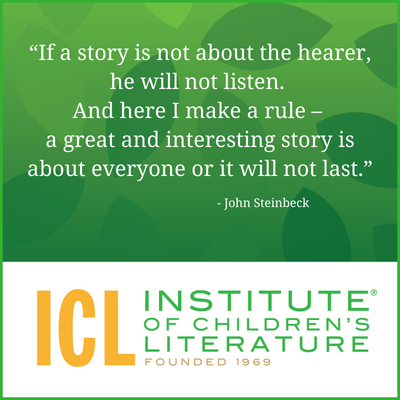
5 Ways Writers Can Prep for 2025 Goal Setting
Before we roll on to the new writing year, let’s harness our optimism for the blank slate before us and prepare for our 2025 Goal Setting just for writers.

We teach our students how to write and get published!
View our Course Catalog >
As well as looking at what we’ve accomplished this year (what we’ve written and what we’ve learned) it’s good to remember the year is still not over. Sure, time is tight, but we have the opportunity to learn something new right now, or at least take a new look at something we’ve used time after time. Today, let’s talk about sensory detail, and why you should include it in your writing.
All storytelling involves a relationship between the creator and the consumer. The creator produces part of the story, but the consumer (the reader, the listener, or the watcher) fills in the gaps. For example, most readers have mental images of novel characters that go beyond what specifics are on the page. (This is one reason why movies made from our favorite books can be so jarring. They conflict with all the imagining we did when reading them.)

Sometimes when I read scenes written by writers very early in their writing journey, I’ll see pages of dialogue with absolutely nothing else. The whole scene consists of voices in a void. We don’t know where they are. We don’t know what they are doing (or we know only because the characters voice it out loud). It’s like listening to a radio play with no sound effects — just voices.
This kind of thing gives the reader no launching spot for imagination. It asks too much of the reader in the writer/reader relationship. Without sensory detail, the world of your book or story depends entirely upon the reader to build it with no guideposts or connections, and that’s a task many readers will not take on. Readers may say they couldn’t connect with the story, that it was too shallow, or that they didn’t believe in the characters. These kinds of comments may be triggered by problems with sensory detail, or the lack thereof.
The only time voices in a void can work is when they are actual voices in a void, and the content of the dialogue makes it very clear these are voices without form and their world is without form. Something like that would struggle to hold interest long, but it would, at least, make sense. Otherwise, scenes that are written with only dialogue simply don’t make sense. Think for yourself how much of your life would be lost if only the words you speak or hear counted. For example, you wouldn’t know the taste of a crisp sweet apple and the sound of biting into it. The burst of juiciness wouldn’t be part of your world. You don’t want your story squeezed down to only voices because what you lose will result in losing the reader as well.
Sensory detail isn’t simply in the story for the sake of proving you can do it. The next common mistake after writing dialogue-only scenes tends to be adding sensory detail that serves no purpose and feels a little odd. For example, a scene where two characters are walking through a cemetery after dark is probably not the time for one of them to pull an orange from his pocket and begin peeling it, releasing that burst of citrus scent and the sticky spray on his fingers. That simply wouldn’t suit the setting or the actions.
Now, sometimes you’ll want a starkly out-of-place action because it reveals something about the character or because it will distract the reader while you’re giving them a clue that you don’t want them to notice too much, but choices like that are made purposefully. As with everything in writing, the choices you make need to be purposeful choices.
Sensory detail can play a part in building a mood. For example, a walk in the woods can be marked by dappled sunlight breaking through the trees and the sound of squirrels rustling through fallen leaves and scolding from nearby branches. That would be one kind of mood. However, a walk in the woods can also be cold and dark with the canopy blocking much of the light. Water can drip from leaves and run down a character’s back like an icy finger. Frightened animals can burst from the underbrush in an explosion of pushed-aside branches and twigs and a blurred rush of motion. Those details would create a very different sort of mood.
This is one reason sensory detail needs to work together with the setting, character, and mood to create exactly the sort of experience you want for the reader. If a rabbit burst out of the underbrush and races, terrified across the woodland path, you won’t need to give details of the softness of the rabbit’s fur or how his eyes were rolling with terror (they probably were, but would a character actually see that?) The reader will play their part by imagining what that kind of startling moment would be like as long as you give them enough to inspire them.
Sensory detail can also move the plot along by drawing a character’s attention (and thus the reader’s attention) toward something or away from something. A character might idly pull books from a shelf in an old private library and the smell of the books would help paint the picture of the age of the house and the slight decay that comes with age. But it could also afford the opportunity for a slip of paper to fall from the pages and flutter to the floor, thus drawing attention to a revelation to be had from that paper. But perhaps that fluttering paper wasn’t to draw the reader toward what was on it, because what was on it wasn’t important. Maybe it was to draw the reader’s attention away from the movement at the window, mentioned briefly, and then eclipsed by the mystery paper falling from the book in the character’s hands. Careful manipulation of all the details in a scene will help you direct the reader in the direction you want them to follow.
Readers connect with what they can recognize, the places where the story touches them, their lives, and their experiences. One of the places where we do this is sensory detail. A story where a troubled family experiences things that have never happened to most readers can be grounded by sensory experiences.
For example, an argument might erupt between parents when the main character is eating his breakfast cereal. The cereal might be a little dry because there wasn’t quite enough milk left. The crunch of the character’s favorite cereal is now made not as good because the cereal wants to turn into a gluey mass in his dry mouth as his parents rail against one another. That experience of eating cereal that is a bit too dry is familiar to many and would offer a point of connection in a moment that is not typical.
So, I challenge you. As you’re going through what you’ve learned this year, what you’ve accomplished, and what you plan to do next year, think about the powerful tool of sensory detail and ask yourself: have I been making the most of this tool? Do I need more practice in using it? Consider starting a study from books you admire. How do the authors handle sensory detail?
Once you start looking for it, you’ll see it everywhere — even in picture books where the visuals are handled by the illustrations so it’s easy to think sensory detail never comes into play. But look again and think about senses beyond sight. How often do you hear things in the picture books you read? How often do you feel them? You may find books you thought you knew are full of new surprises.
With over 100 books in publication, Jan Fields writes both chapter books for children and mystery novels for adults. She’s also known for a variety of experiences teaching writing, from one session SCBWI events to lengthier Highlights Foundation workshops to these blog posts for the Institute of Children’s Literature. As a former ICL instructor, Jan enjoys equipping writers for success in whatever way she can.

Before we roll on to the new writing year, let’s harness our optimism for the blank slate before us and prepare for our 2025 Goal Setting just for writers.

Writers can be thin-skinned when it comes to getting feedback on their work. Let’s look at 4 ways to positively deal with constructive criticism!

Rejection is part of the territory when it comes to being a writer. Today we offer reflection for writers to help redirect your efforts after a rejection.
1000 N. West Street #1200, Wilmington, DE 19801
© 2024 Direct Learning Systems, Inc. All rights reserved.
1000 N. West Street #1200, Wilmington, DE 19801
© 2024 Direct Learning Systems, Inc. All rights reserved.
1000 N. West Street #1200, Wilmington, DE 19801
© 2024 Direct Learning Systems, Inc. All rights reserved.
1000 N. West Street #1200, Wilmington, DE 19801
© 2024 Direct Learning Systems, Inc. All rights reserved.

1000 N. West Street #1200, Wilmington, DE 19801
© 2025 Direct Learning Systems, Inc. All rights reserved.

1000 N. West Street #1200, Wilmington, DE 19801
©2025 Direct Learning Systems, Inc. All rights reserved. Privacy Policy.